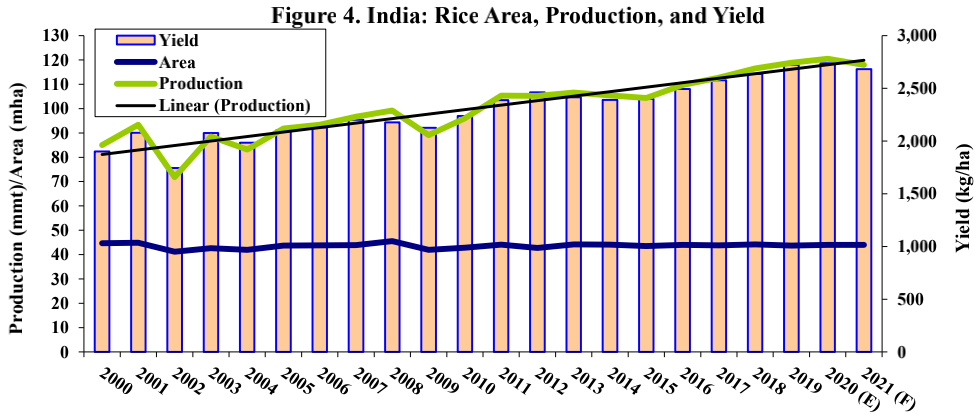India's Rice Export Outlook MY 2021/22
India is one of the largest milled rice-producing countries in the global market, representing 15% of the total market share in MY 2020/21. According to USDA estimates, forecasts for MY 2021/22 rice production are expected to be 118 million metric tons. The rice yields have increased from favorable monsoon rains, improved hybrid varieties, and expanded irrigation infrastructure in the past years.

India witnessed an above-normal monsoon during 2020, which helped to achieve record rice yields and production. The rains lowered production costs by requiring less irrigation resulting in higher rice profit margins than other crops. A timely and well-distributed monsoon is also expected in the upcoming MY 2021/22, which can possibly further boost production yields.
The demand for different varieties of Indian is rice is soaring in the international market as the country offers quality rice at a competitive price. Vietnam started importing rice from India this year, after more than ten years, due to a fall in the area under rice production. It initially started importing a lower-priced 100% broken variety of rice, and it now bagging the better quality grades to meet its domestic needs. Bangladesh also approved the import of 50,000 MT of rice from India in March to increase the country's rice stock and control spiraling prices of the fruit.
Amidst the pandemic, there is a shortage of staple grains like rice across the world due to limited production, logistic issues, and higher prices. India holds a high position in the global rice trade. An increase in rice production and stocks of the country will boost the exports and cover the domestic shortages of rice in countries like Vietnam and Bangladesh where rice is a staple food. India’s increased production is likely to provide food security to its neighboring countries and main rice importing countries like Saudi Arabia, Iran, Nepal, and African countries.
Sources
- The Daily Star. “Govt to import 50,000 tonnes of rice from India.”
- Business Line. “Now, Vietnam begins buying higher grade rice from India.”
- USDA. Grain and Feed Annual - 2021.